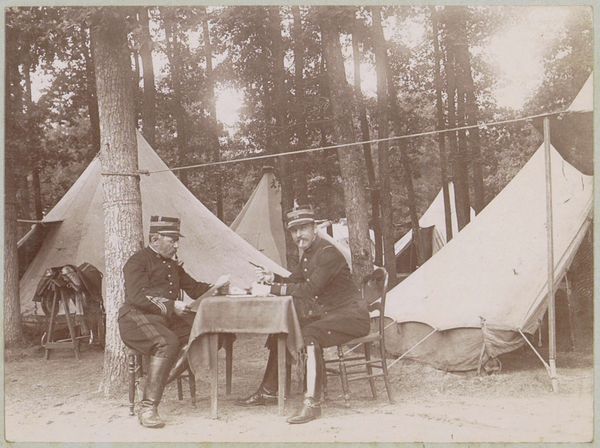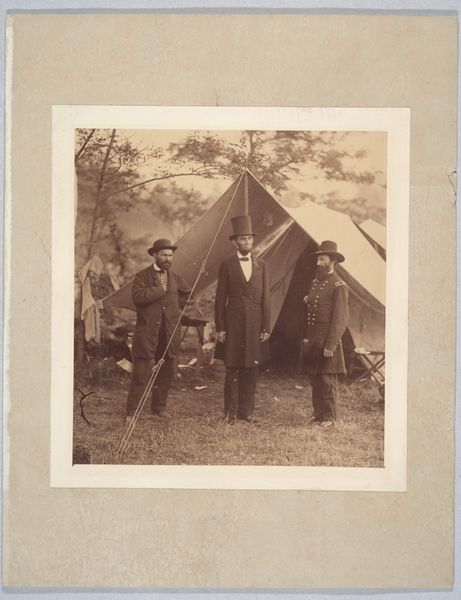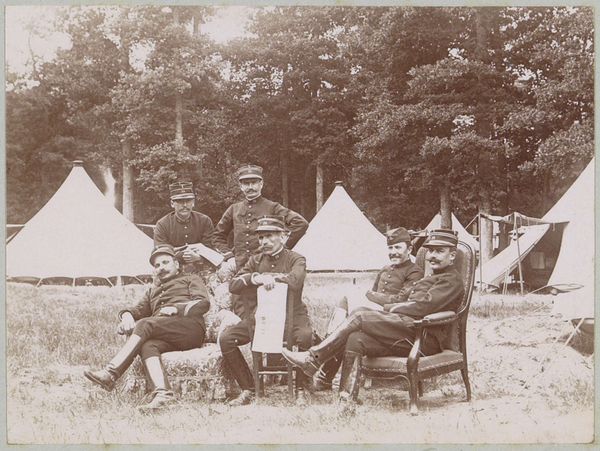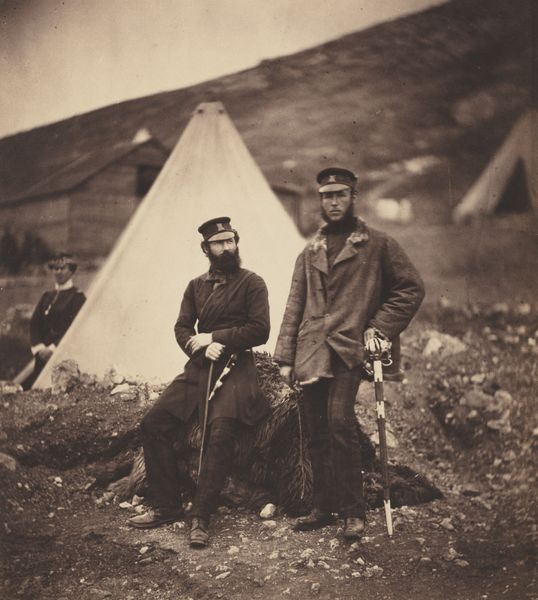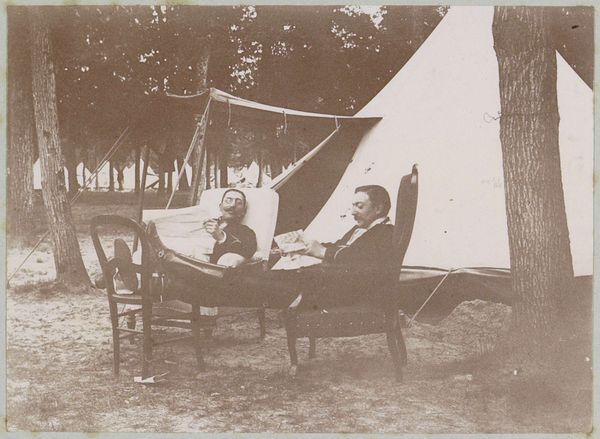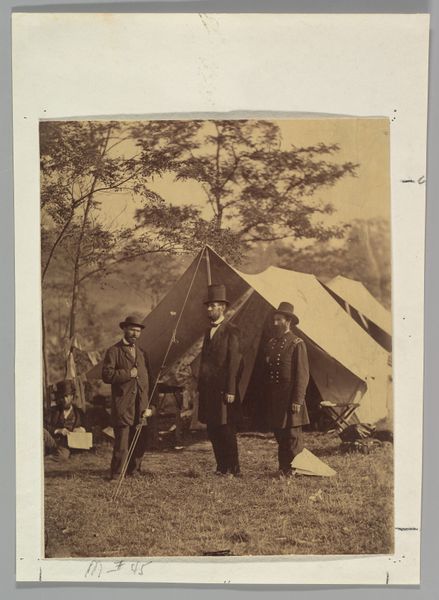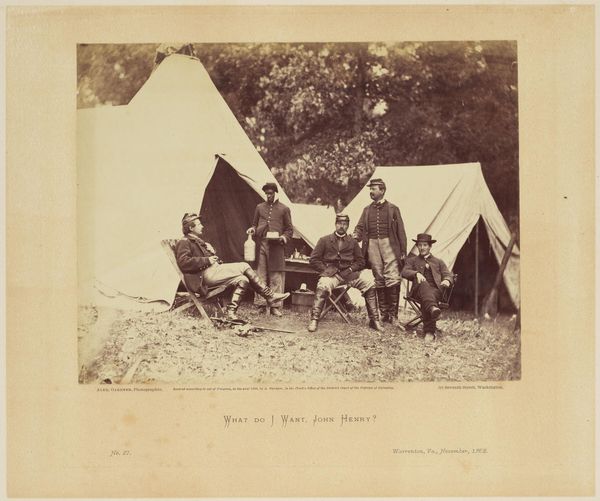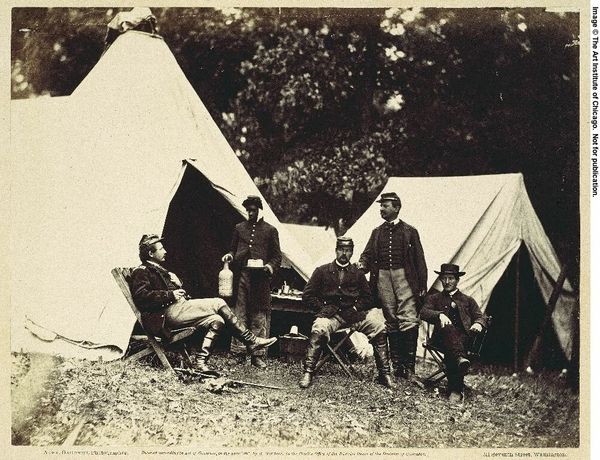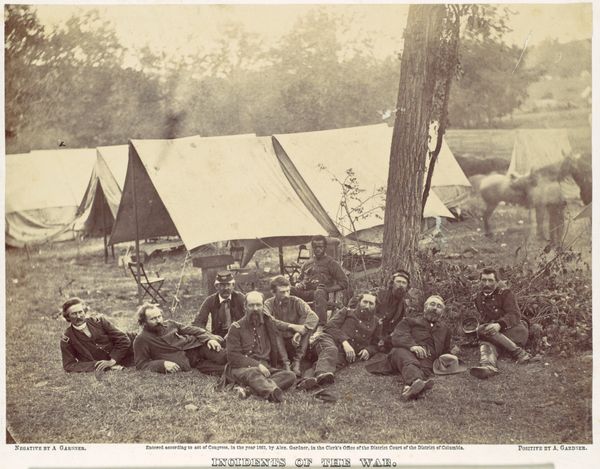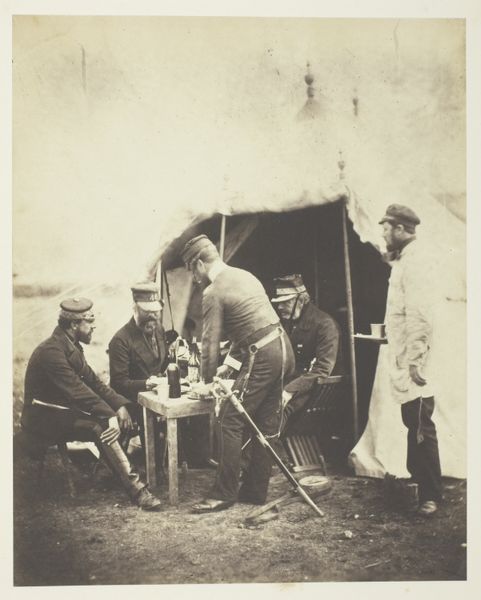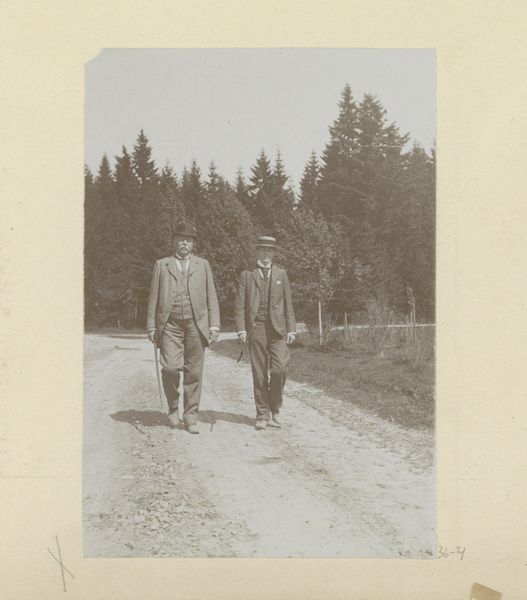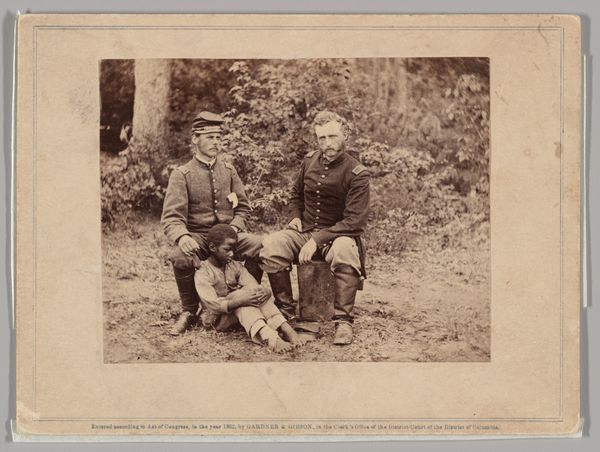
photography
#
portrait
#
photography
#
genre-painting
#
realism
Dimensions: height 80 mm, width 109 mm
Copyright: Rijks Museum: Open Domain
Curator: This photograph, taken in 1896, captures two soldiers in a military camp at Fontainebleau. It’s simply titled 'Twee militairen in een legerkamp te Fontainebleau,’ by Delizy, held in the Rijksmuseum's collection. Editor: My first impression is one of staged boredom, really. The light is so even, the soldiers seem rather self-aware and composed. It's hard to get a sense of the grueling reality of military life. Curator: Indeed. The composition directs our focus to the materiality of military life. The meticulously buttoned uniforms, the taut canvas of the tents behind them, speak to the standardization of the late 19th-century military apparatus and consumerism. It suggests the means by which individuals are processed and molded into instruments of war, their uniforms, tent construction – even their poses are carefully managed. Editor: Absolutely. Considering this piece within its social context, we must acknowledge the rise of nationalistic fervor at the turn of the century, colonialism. The photograph subtly echoes the normalization of the military and its role in sustaining systems of domination, representing more than mere military procedure and signaling power. Curator: And let’s think about photographic processes itself. The photographer Delizy, most likely, wasn't on the battlefields, right? Producing something for an intended purpose. Were images used to glamorize conflict? Photography was certainly shaping narratives and influencing perceptions. Editor: Good point. Furthermore, who is Delizy, and what were their motivations? Are they embedded with the military? Did the subject select, influence, or compensate the photograph in some way? And beyond their technical mastery, these questions illuminate whose stories are told, whose voices are amplified, and the inherent biases that shape historical memory. Curator: Looking closer at the textures – the wool uniforms, the wooden chair, the linen of the tents, and comparing that with our world of modern materials like plastic… It begs the questions of function. For whom? How long? How often? It reminds me of labor systems in that time. Editor: So it should! What an interesting picture, it opens so many points of consideration that are pertinent still to society, labor, production and of course power structures that underpin our society and how these were developing during this historical period. Curator: The picture brings many questions, but it doesn’t answer simply – very insightful.
Comments
No comments
Be the first to comment and join the conversation on the ultimate creative platform.
